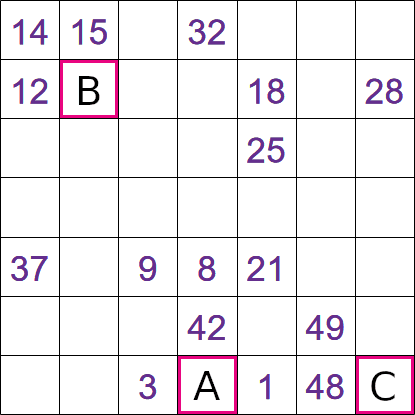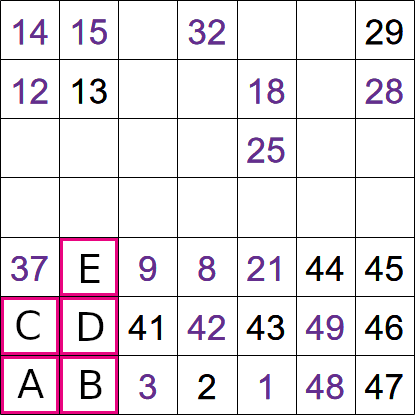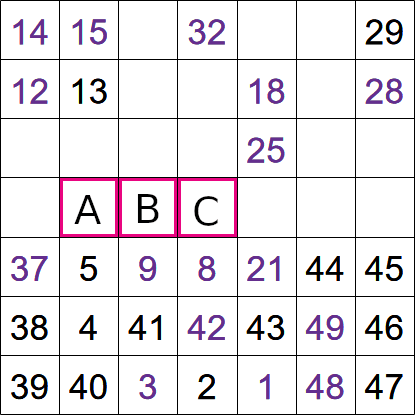This is an example of a Hidoku starting puzzle. This grid is 7x7, this means our aim is to draw a single
continuous line from 1 to 7x7 = 49.
It doesn't always make sense to start solving the puzzle from the number 1, but in this case, it does.
We need to insert a number 2 between the numbers 1 and 3, the only place where we can do this is in
cell 'A'.
Looking in the top-left of this puzzle, we can see that the numbers 12 and 14 are next to each other,
but we still need to insert a number 13 next to both. Cell 'B' is the only place where we can do this.
Cell 'C' is a little less straightforward. We know we need to insert the number 47 somewhere next to 48,
and there are three possible places where we can do this. However, if 47 isn't inserted in to cell 'C',
then this will leave cell 'C' as a dead-end where the path can't get back out of. This means that cell 'C'
must be 47.
 Hidoku leaderboard
Hidoku leaderboard



